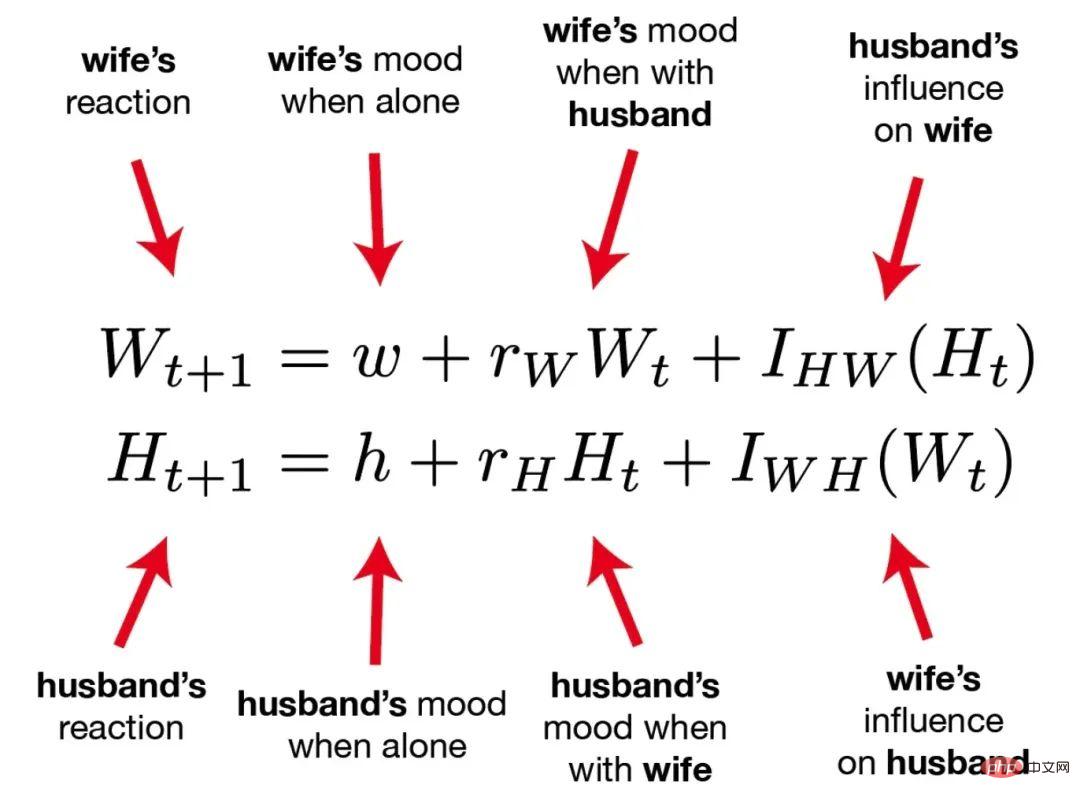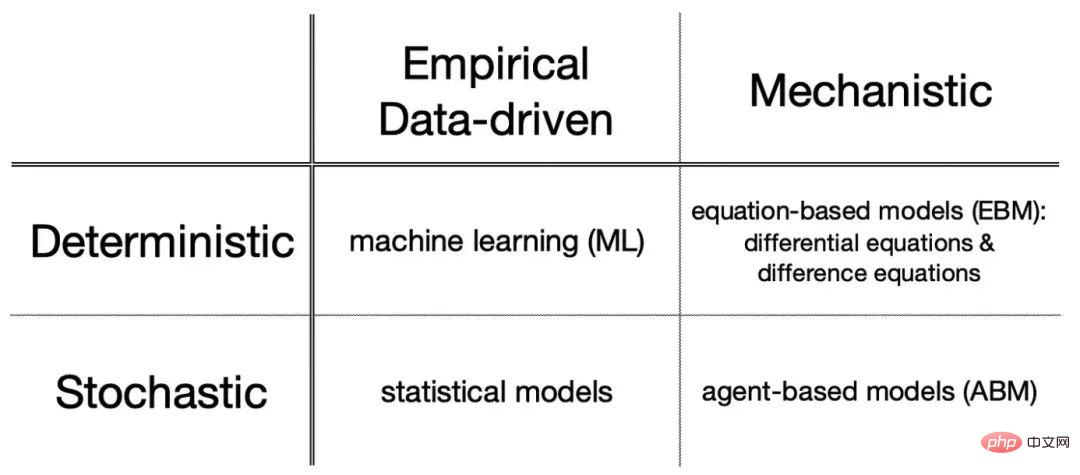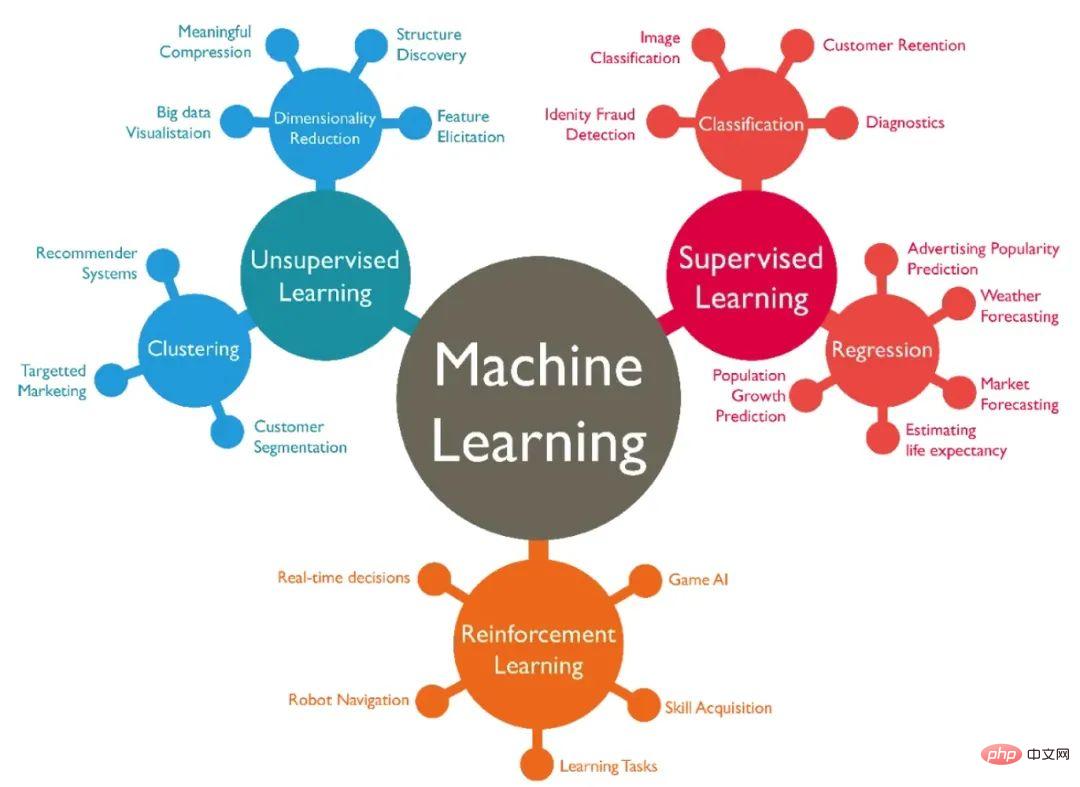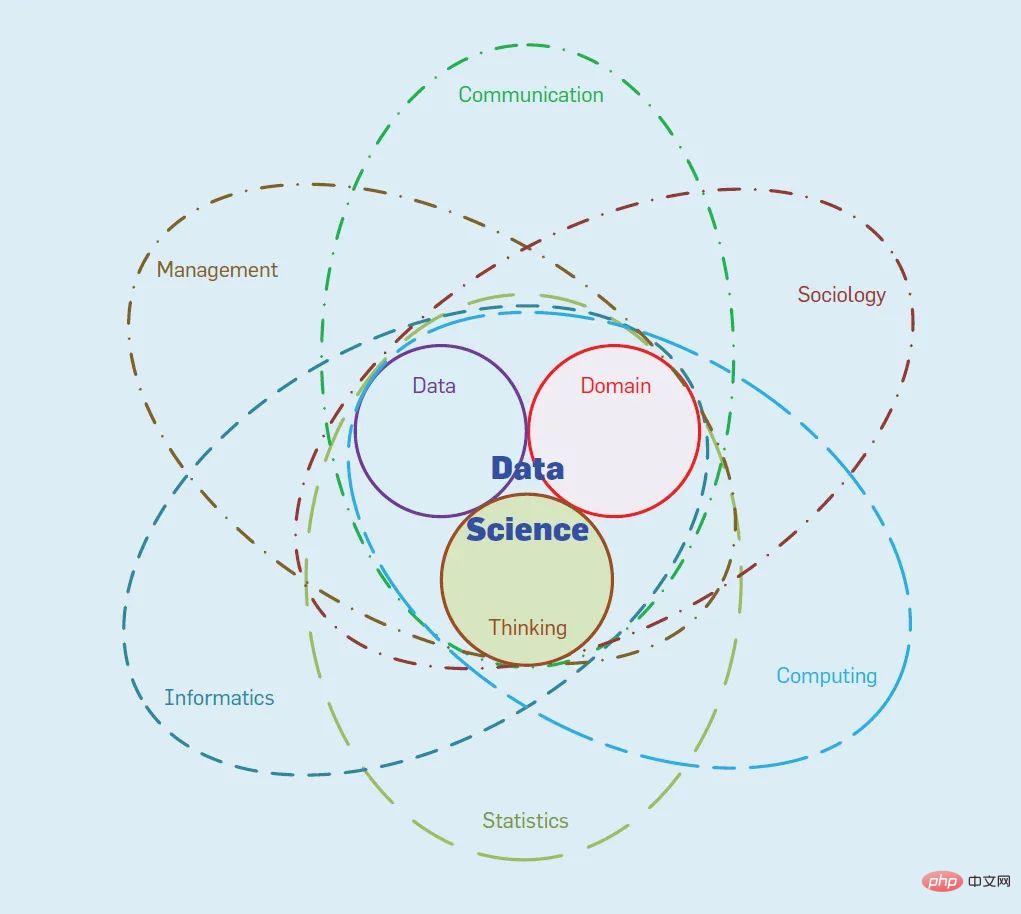A brief analysis of machine learning and differential equations
Although machine learning has been around since the 1950s, as computers have become more powerful and data has exploded, how can people use artificial intelligence to gain a competitive advantage, improve insights, and grow profits? Extensive practice. For different application scenarios, machine learning and differential equations have a wide range of scenarios.
Everyone has already used machine learning, especially deep learning based on neural networks. ChatGPT is very popular. Do you still need to understand differential equations in depth? No matter what the answer is, it will involve a comparison between the two. So, what is the difference between machine learning and differential equations?
Starting from the differential equation of the love model

These two equations predict the longevity of the couple’s love relationship, based on psychology Based on the seminal work of psychologist John Gottman, the model predicts that sustained positive emotions are a powerful factor in marital success. For more interpretation of the model, you can refer to the book "Happy Marriage". The author also gives 7 rules for maintaining a happy marriage:
- Perfect your love map
- Cultivate affection and praise for your spouse
- Move closer to each other instead of farther away
- Let your spouse influence your decisions
- Start with gentleness and end with compromise
- Learn to live in harmony with problems
- Create common meaning
We have experienced the epidemic personally for three years, and we know what is good and what is good. So, how to use differential equations to describe the relationship between patients and infectious persons?

#The SIR model assumes that viruses are spread through direct contact between infected and uninfected people, with sick people automatically recovering at some fixed rate.
These differential equations all contain the derivatives (ie, the rate of change) of some unknown functions. These unknown functions, such as S (t), I (t) and R (t) in the SIR model, are called the Solutions of differential equations. Based on the mechanics of these equations, we can derive how the model is designed, and the data will later be used to verify our hypotheses.
Classification of mathematical models
Mathematical models like differential equations make assumptions about the basic mechanism of the system in advance. Modeling begins with physics. In fact, the entire field of mathematical modeling begins with The 17th-century quest to unravel the fundamental dynamics behind planetary motion. Since then, mathematically based mechanistic models have unlocked key insights into many phenomena, from biology and engineering to economics and the social sciences. Such mechanism models can be divided into equation-based models, such as differential equations, or agent-based models.

Experience-based or data-driven modeling, such as machine learning, is about understanding the structure of a system through rich data. Machine learning is especially useful for complex systems where we don't really know how to separate the signal from the noise, where simply training a clever algorithm can help solve the problem.
Machine learning tasks can be roughly divided into the following categories:
- Supervised learning (e.g., regression and classification);
- Unsupervised learning (e.g., Clustering and dimensionality reduction) ;
- Reinforcement Learning

Advanced machine learning and artificial intelligence systems are now everywhere in our daily lives No, from smart speaker-based conversational assistants (such as Xiaodu) to various recommendation engines, to facial recognition technology, and even Tesla’s self-driving cars. All of this is driven by mathematical and statistical modeling embedded beneath mountains of code.
Further, these models can be classified as "deterministic" (predictions are fixed) or "stochastic" (predictions include randomness).
Deterministic models ignore random variables and always predict the same results under the same starting conditions. In general, machine learning and equation-based models are deterministic and the output is always predictable. In other words, the output is completely determined by the input.
The stochastic model considers random changes in the population by introducing probability into the model. One way to capture these changes is to make each entity a separate Agent in the model, and define allowed behaviors and mechanisms for these agents, which have certain probabilities. These are Agent-based models.
However, the achievability of modeling individual actors comes at a cost, and agent-based models are more realistic. Due to the high computational cost and the interpretability of the model, this inspired a key concept in mathematical modeling: model complexity.

Model complexity
The dilemma of model complexity is a reality that all modelers must face. Our goal is to build and optimize both A model that is too simple and not too complex. Simple models are easy to analyze, but often lack predictive power. Complex models may be surreal, but it is possible to try to understand the truth behind complex problems.
We need to make a trade-off between simplicity and ease of analysis. Complex machine learning models strive to learn the signal (i.e., the true structure of the system) while rejecting the noise (i.e., interference). This causes the model to perform poorly on new data. In other words, machine learning models are less generalizable.
The delicate act of balancing model complexity is an "art", trying to find a sweet spot that is neither too simple nor too complex. This ideal model washes away the noise, captures the underlying dynamics of what is going on, and is reasonably explainable.
It should be noted that this means that a good mathematical model is not always correct. But that's okay. Generalizability is the goal, being able to explain to an audience why the model does what it does, whether they are academics, engineers, or business leaders.
All models are wrong, but some are useful. ——George Box, 1976
In machine learning and statistics, model complexity is called the bias-variance trade-off. High-bias models are too simple, resulting in underfitting, while high-variance models remember noise instead of signal, resulting in overfitting. Data scientists strive to achieve this delicate balance through careful selection of training algorithms and tuning of associated hyperparameters.
Comparison of Differential Equations and Machine Learning
In mechanism modeling, we carefully observe and review a system before making assumptions about the underlying mechanism of the system. phenomenon, and then validate the model with data. Are our assumptions correct? If so, since it is a hand-picked mechanism, it is entirely possible to explain to anyone what model behaves this way. If the assumption is wrong, that's okay, you just wasted some time, no big deal. Modeling is trial and error after all. Tinker with those assumptions or even start from scratch. Mechanism models, usually equations in the form of differential equations or even agent-based models.
In data-driven modeling, we first let the data start working and build a panoramic view of the system for us. All we have to do is meet the data quality of that machine and hopefully have enough data. This is machine learning. If a phenomenon is difficult for ordinary people to figure out, a machine can be tuned to sift through the noise and learn the elusive signal for us. Standard machine learning tasks include regression and classification, which are evaluated using a range of metrics. Neural networks and reinforcement learning have also become popular, enabling them to create models and learn surprisingly complex signals.
Although machine learning has been around since the 1950s, as computers have become more powerful and data has exploded, how can people use artificial intelligence to gain a competitive advantage, improve insights, and grow? Profits have launched a wide range of practices. For different application scenarios, machine learning and differential equations have a wide range of scenarios.
The above is the detailed content of A brief analysis of machine learning and differential equations. For more information, please follow other related articles on the PHP Chinese website!

Hot AI Tools

Undresser.AI Undress
AI-powered app for creating realistic nude photos

AI Clothes Remover
Online AI tool for removing clothes from photos.

Undress AI Tool
Undress images for free

Clothoff.io
AI clothes remover

AI Hentai Generator
Generate AI Hentai for free.

Hot Article

Hot Tools

Notepad++7.3.1
Easy-to-use and free code editor

SublimeText3 Chinese version
Chinese version, very easy to use

Zend Studio 13.0.1
Powerful PHP integrated development environment

Dreamweaver CS6
Visual web development tools

SublimeText3 Mac version
God-level code editing software (SublimeText3)

Hot Topics
 15 recommended open source free image annotation tools
Mar 28, 2024 pm 01:21 PM
15 recommended open source free image annotation tools
Mar 28, 2024 pm 01:21 PM
Image annotation is the process of associating labels or descriptive information with images to give deeper meaning and explanation to the image content. This process is critical to machine learning, which helps train vision models to more accurately identify individual elements in images. By adding annotations to images, the computer can understand the semantics and context behind the images, thereby improving the ability to understand and analyze the image content. Image annotation has a wide range of applications, covering many fields, such as computer vision, natural language processing, and graph vision models. It has a wide range of applications, such as assisting vehicles in identifying obstacles on the road, and helping in the detection and diagnosis of diseases through medical image recognition. . This article mainly recommends some better open source and free image annotation tools. 1.Makesens
 This article will take you to understand SHAP: model explanation for machine learning
Jun 01, 2024 am 10:58 AM
This article will take you to understand SHAP: model explanation for machine learning
Jun 01, 2024 am 10:58 AM
In the fields of machine learning and data science, model interpretability has always been a focus of researchers and practitioners. With the widespread application of complex models such as deep learning and ensemble methods, understanding the model's decision-making process has become particularly important. Explainable AI|XAI helps build trust and confidence in machine learning models by increasing the transparency of the model. Improving model transparency can be achieved through methods such as the widespread use of multiple complex models, as well as the decision-making processes used to explain the models. These methods include feature importance analysis, model prediction interval estimation, local interpretability algorithms, etc. Feature importance analysis can explain the decision-making process of a model by evaluating the degree of influence of the model on the input features. Model prediction interval estimate
 Transparent! An in-depth analysis of the principles of major machine learning models!
Apr 12, 2024 pm 05:55 PM
Transparent! An in-depth analysis of the principles of major machine learning models!
Apr 12, 2024 pm 05:55 PM
In layman’s terms, a machine learning model is a mathematical function that maps input data to a predicted output. More specifically, a machine learning model is a mathematical function that adjusts model parameters by learning from training data to minimize the error between the predicted output and the true label. There are many models in machine learning, such as logistic regression models, decision tree models, support vector machine models, etc. Each model has its applicable data types and problem types. At the same time, there are many commonalities between different models, or there is a hidden path for model evolution. Taking the connectionist perceptron as an example, by increasing the number of hidden layers of the perceptron, we can transform it into a deep neural network. If a kernel function is added to the perceptron, it can be converted into an SVM. this one
 Identify overfitting and underfitting through learning curves
Apr 29, 2024 pm 06:50 PM
Identify overfitting and underfitting through learning curves
Apr 29, 2024 pm 06:50 PM
This article will introduce how to effectively identify overfitting and underfitting in machine learning models through learning curves. Underfitting and overfitting 1. Overfitting If a model is overtrained on the data so that it learns noise from it, then the model is said to be overfitting. An overfitted model learns every example so perfectly that it will misclassify an unseen/new example. For an overfitted model, we will get a perfect/near-perfect training set score and a terrible validation set/test score. Slightly modified: "Cause of overfitting: Use a complex model to solve a simple problem and extract noise from the data. Because a small data set as a training set may not represent the correct representation of all data." 2. Underfitting Heru
 The evolution of artificial intelligence in space exploration and human settlement engineering
Apr 29, 2024 pm 03:25 PM
The evolution of artificial intelligence in space exploration and human settlement engineering
Apr 29, 2024 pm 03:25 PM
In the 1950s, artificial intelligence (AI) was born. That's when researchers discovered that machines could perform human-like tasks, such as thinking. Later, in the 1960s, the U.S. Department of Defense funded artificial intelligence and established laboratories for further development. Researchers are finding applications for artificial intelligence in many areas, such as space exploration and survival in extreme environments. Space exploration is the study of the universe, which covers the entire universe beyond the earth. Space is classified as an extreme environment because its conditions are different from those on Earth. To survive in space, many factors must be considered and precautions must be taken. Scientists and researchers believe that exploring space and understanding the current state of everything can help understand how the universe works and prepare for potential environmental crises
 Implementing Machine Learning Algorithms in C++: Common Challenges and Solutions
Jun 03, 2024 pm 01:25 PM
Implementing Machine Learning Algorithms in C++: Common Challenges and Solutions
Jun 03, 2024 pm 01:25 PM
Common challenges faced by machine learning algorithms in C++ include memory management, multi-threading, performance optimization, and maintainability. Solutions include using smart pointers, modern threading libraries, SIMD instructions and third-party libraries, as well as following coding style guidelines and using automation tools. Practical cases show how to use the Eigen library to implement linear regression algorithms, effectively manage memory and use high-performance matrix operations.
 Explainable AI: Explaining complex AI/ML models
Jun 03, 2024 pm 10:08 PM
Explainable AI: Explaining complex AI/ML models
Jun 03, 2024 pm 10:08 PM
Translator | Reviewed by Li Rui | Chonglou Artificial intelligence (AI) and machine learning (ML) models are becoming increasingly complex today, and the output produced by these models is a black box – unable to be explained to stakeholders. Explainable AI (XAI) aims to solve this problem by enabling stakeholders to understand how these models work, ensuring they understand how these models actually make decisions, and ensuring transparency in AI systems, Trust and accountability to address this issue. This article explores various explainable artificial intelligence (XAI) techniques to illustrate their underlying principles. Several reasons why explainable AI is crucial Trust and transparency: For AI systems to be widely accepted and trusted, users need to understand how decisions are made
 Outlook on future trends of Golang technology in machine learning
May 08, 2024 am 10:15 AM
Outlook on future trends of Golang technology in machine learning
May 08, 2024 am 10:15 AM
The application potential of Go language in the field of machine learning is huge. Its advantages are: Concurrency: It supports parallel programming and is suitable for computationally intensive operations in machine learning tasks. Efficiency: The garbage collector and language features ensure that the code is efficient, even when processing large data sets. Ease of use: The syntax is concise, making it easy to learn and write machine learning applications.






